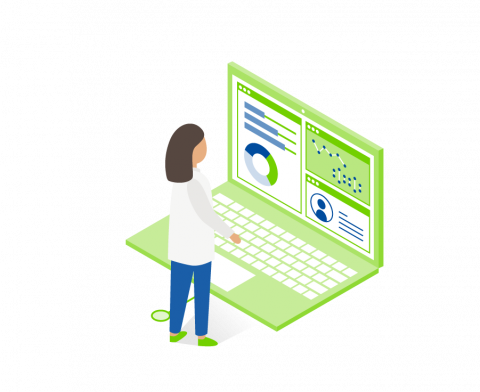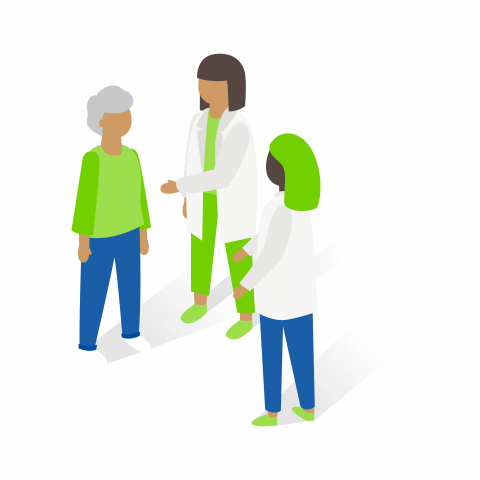Genomic sequencing has become a powerful weapon in the fight against both superbugs and viruses like COVID-19.
Here, we break down how genomics can help identify and control transmission of pathogens in hospitals before an outbreak happens.
Step 1: Sample collection and culture
To prevent outbreaks before they occur, swabs are taken from high-risk patients – such as people with immune system disorders, patients with cancer undergoing chemotherapy and patients in intensive care settings. The sample is taken to a laboratory and grown under special conditions on a plate, known as a bacterial culture.

Step 2: Identification and testing
The cultures are checked to identify which types and strains of bacteria are present and detect whether they have developed resistance to one or more antibiotics. Antibiotic-resistant bacteria are commonly called ‘superbugs’. If a superbug is detected, DNA is extracted from the bacteria and then sequenced.
Step 3: Sequencing
The entire genome of the bacterium is sequenced. This means all the ‘letters’ in the bacterial genes (DNA) are read. Genome sequencing finds the genetic changes that turns a bacterium into a superbug. Sequencing a whole human genome would take some time but for bacteria, and other microbes such as viruses, it happens much faster.
Step 4: Tracing

Like people, every bacterium has a unique genetic ‘fingerprint’. Genomic sequencing identifies that fingerprint. Viruses and bacteria reproduce by copying themselves, so if the exact same copy is detected across multiple people, they probably contracted it from the same source.
Sequencing enables the pathogen genomics team to determine from whom and where a particular infection is spreading.
Genomic information is then reviewed together with clinical information and epidemiological data from the patient’s health team. For example, which wards the patient was in and where other patients with the same superbug were. This way they can understand the source of the superbug and how it may have spread.
Step 5: Care

By understanding what type of superbug is present, the hospital can determine the best treatment or management for a patient’s superbug infection, such as different antibiotics and moving infected patients to a special room. The hospital can also quickly implement focused infection control methods in specific areas, such as intensive cleaning, preventing further spread and protecting other vulnerable patients.
Given that most people infected with superbugs in a hospital setting already have serious illnesses, it is vital to reduce infections in these vulnerable patients, because it can quickly become a matter of life and death.
Frequently asked questions
- How do bacteria become antibiotic-resistant?
- Can you treat a superbug infection?
- How do superbugs spread?
- Why is it faster to sequence a bacterial genome than a human genome?
- How is genomic sequencing used for COVID-19?
How do bacteria become antibiotic-resistant?
Resistance genes initially arise from genetic changes in a bacterium’s DNA that, by chance, make them resistant to an antibiotic. This means they can survive and grow even when antibiotics are present. Bacteria also often swap genes between each other, so a ‘normal’ bacterium can pick up an antibiotic resistance gene from another bacterium.
Can you treat a superbug infection?
Sometimes a superbug may be resistant to many antibiotics, but an antibiotic reserved for resistant infections, or a combination of antibiotics, may work. In rare cases, a superbug is resistant to every known antibiotic, so there may be no treatment available. Researchers and pharmaceutical companies are constantly searching for new antibacterial drugs.
How do superbugs spread?
Different bacteria spread in different ways. For example, some spread through contact between people or with the environment, or through the air. This applies to normal bacteria and superbugs.
We are all colonised with bacteria in our gut and on our skin, without these bacteria causing us harm (in fact, they are mostly helpful to us). Sometimes we can become colonised with these superbugs, and this allows humans to spread a superbug without knowing, or without being ill themselves.
Why is it faster to sequence a bacterial genome than a human genome?
Human genomes have about 3 billion DNA ‘letters’ to read but bacterial genomes are about 1000 times smaller, averaging at 5 million DNA letters.
How is genomic sequencing used for COVID-19?
Genomic sequencing tracks the small variations in SARS-CoV-2, the virus that causes COVID-19. These happen naturally as the virus is transmitted from person to person. They enable public health teams to identify chains of transmission, determining where the virus came from and how it is spreading through the community. Missing links indicate there are unknown sources of transmission in the community.
